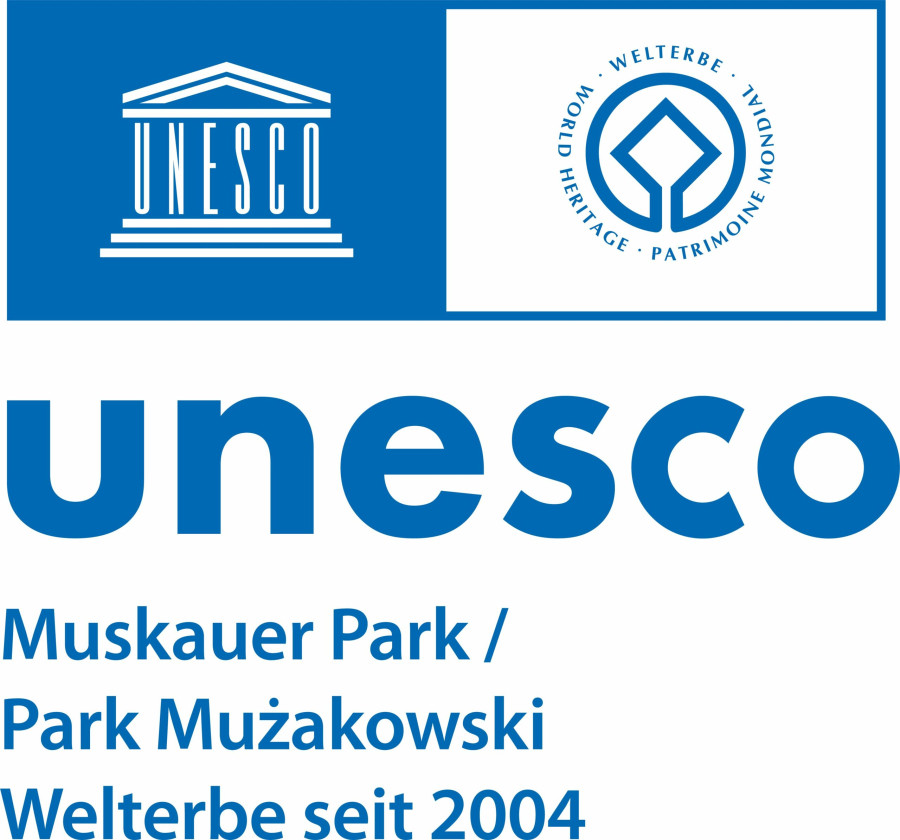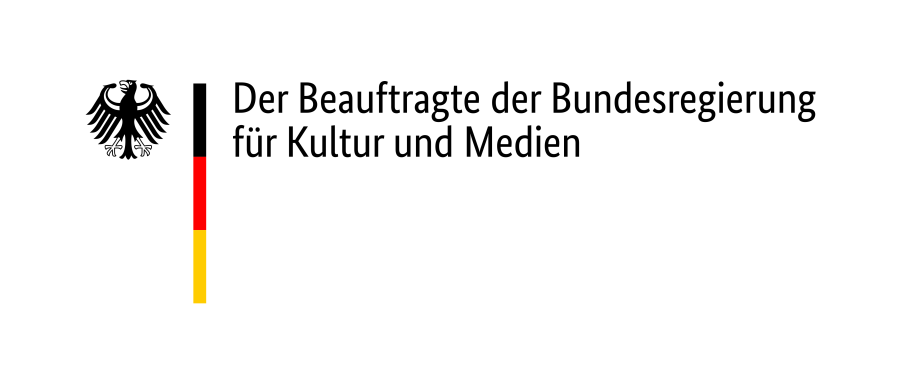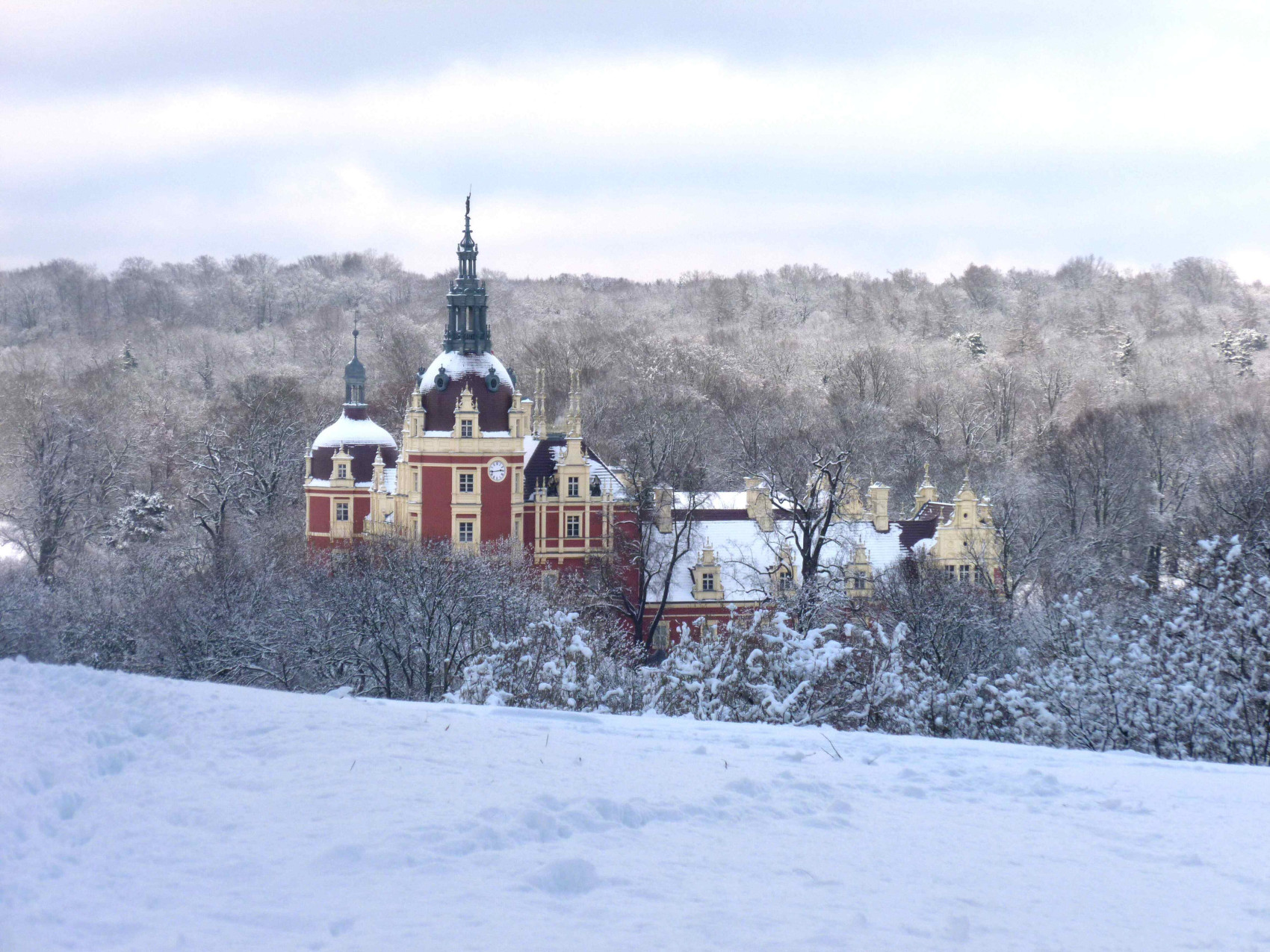
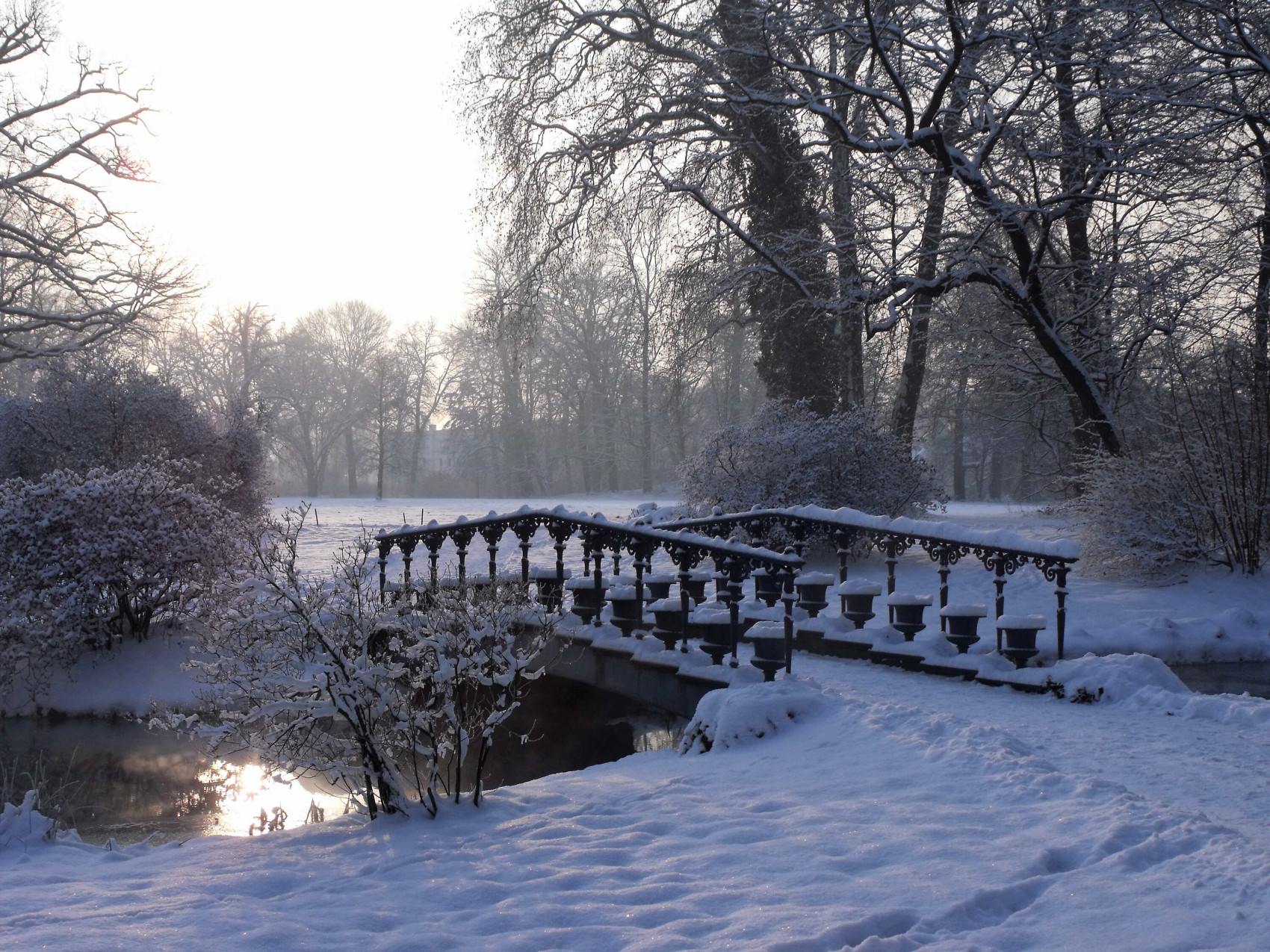
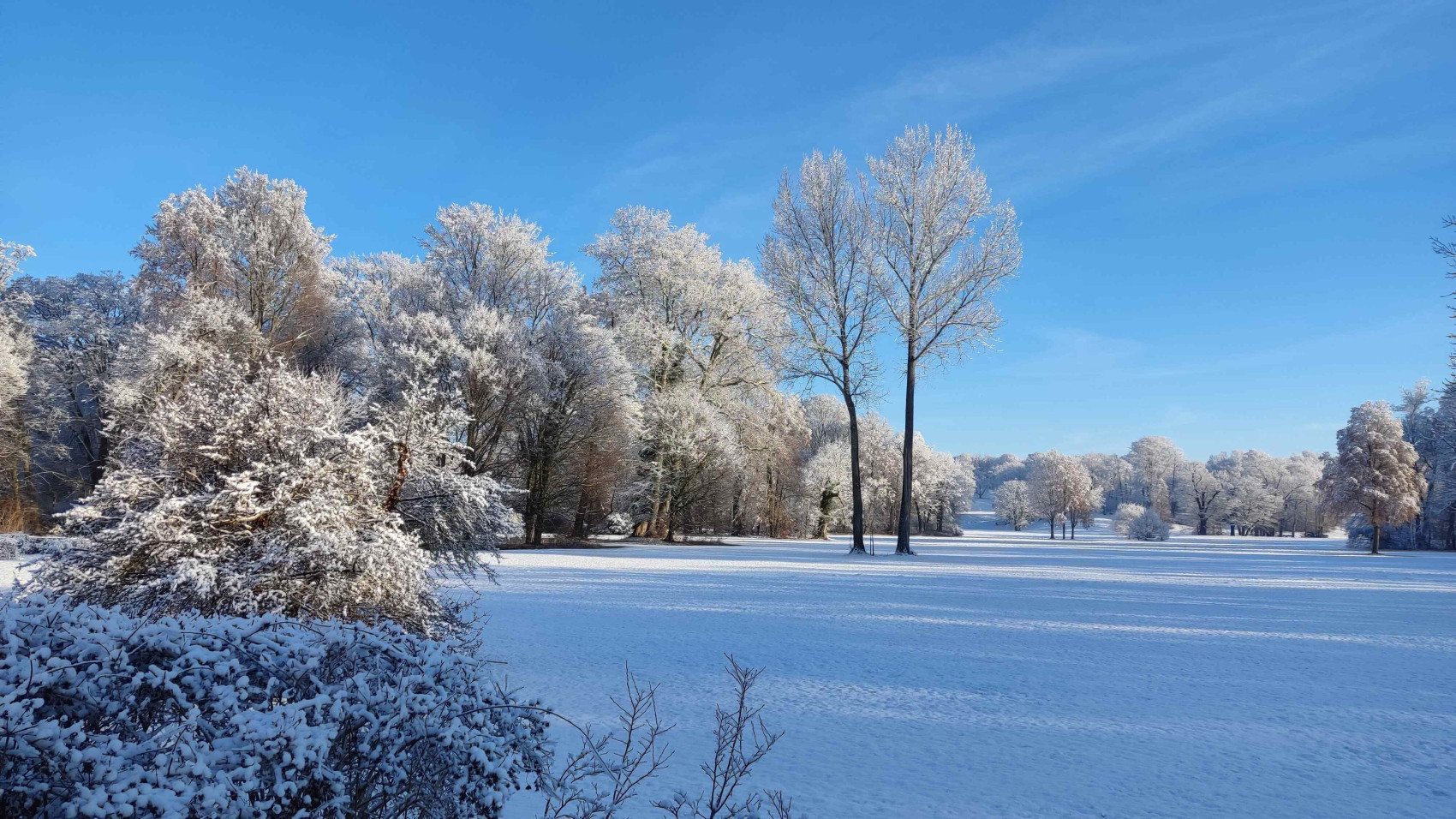
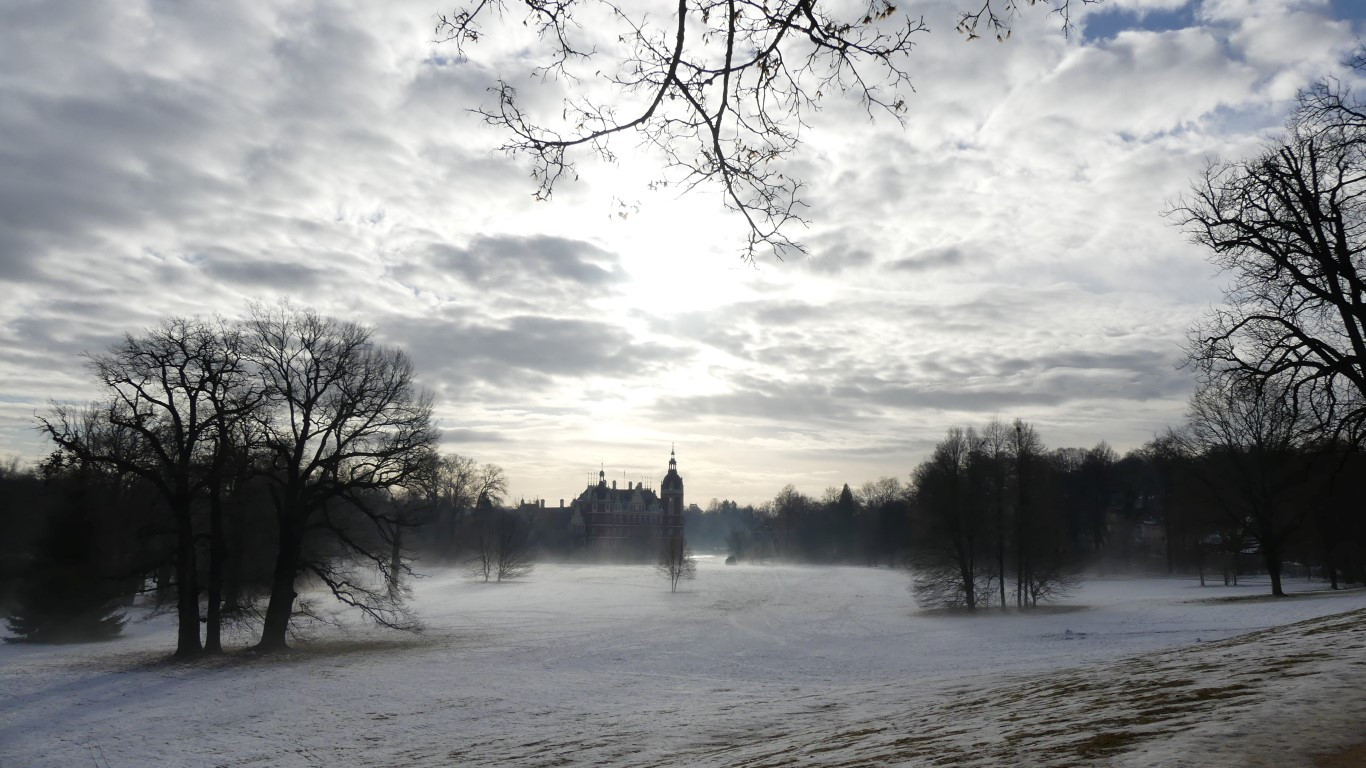
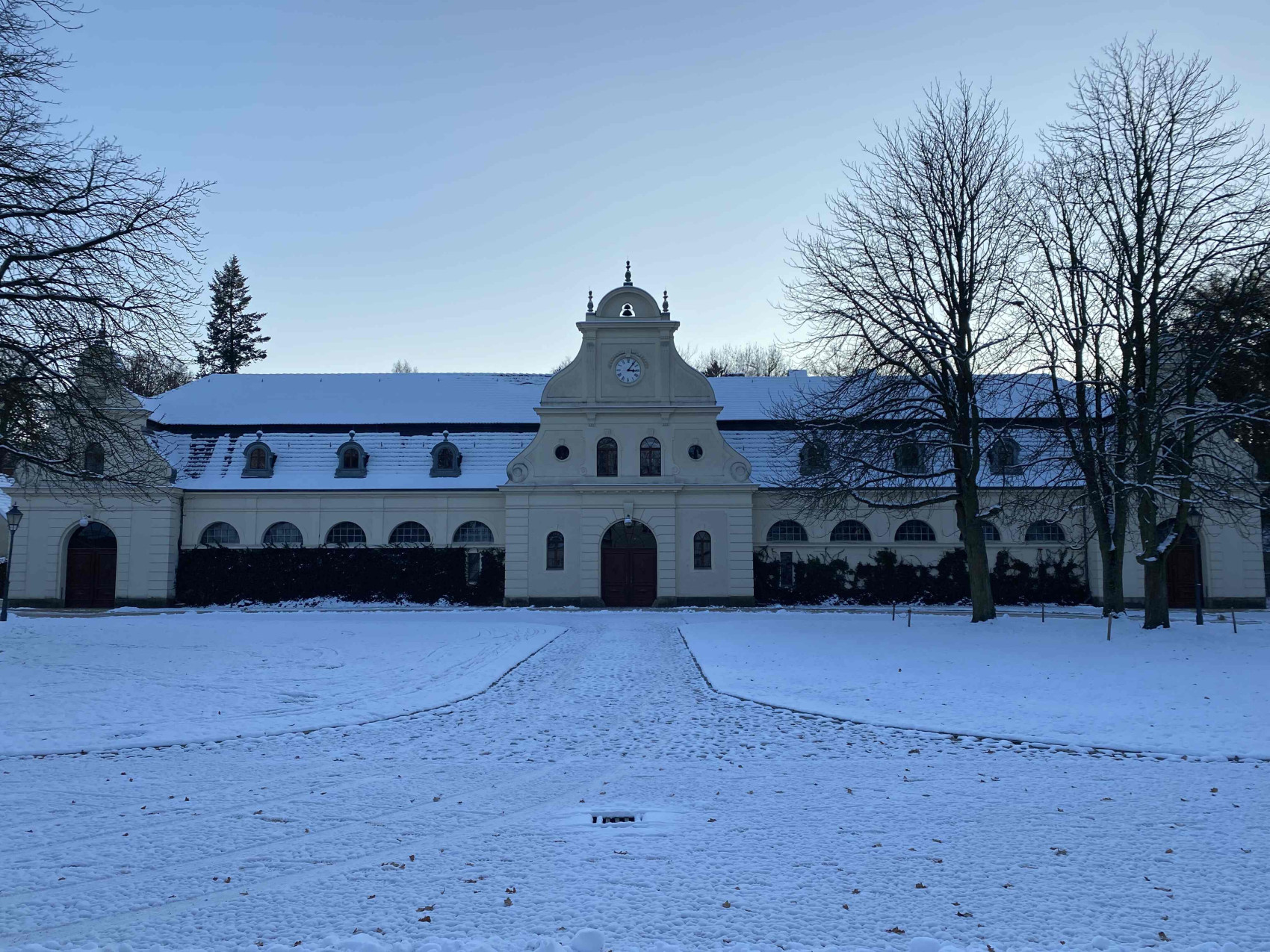
UNESCO-World Heritage Site
Muskau Park
Garden art, nature painting, landscape composition: Pückler’s masterpiece in Bad Muskau and Łęknica has many attributes – and rightly so. When the prince designed the park on the Neisse, he used the stylistic elements of landscape painting. The foreground, middle and background are harmoniously coordinated.
Exhibitions
Pückler! Pückler? Catch Him If You Can!
Permanent exhibition in the New Castle
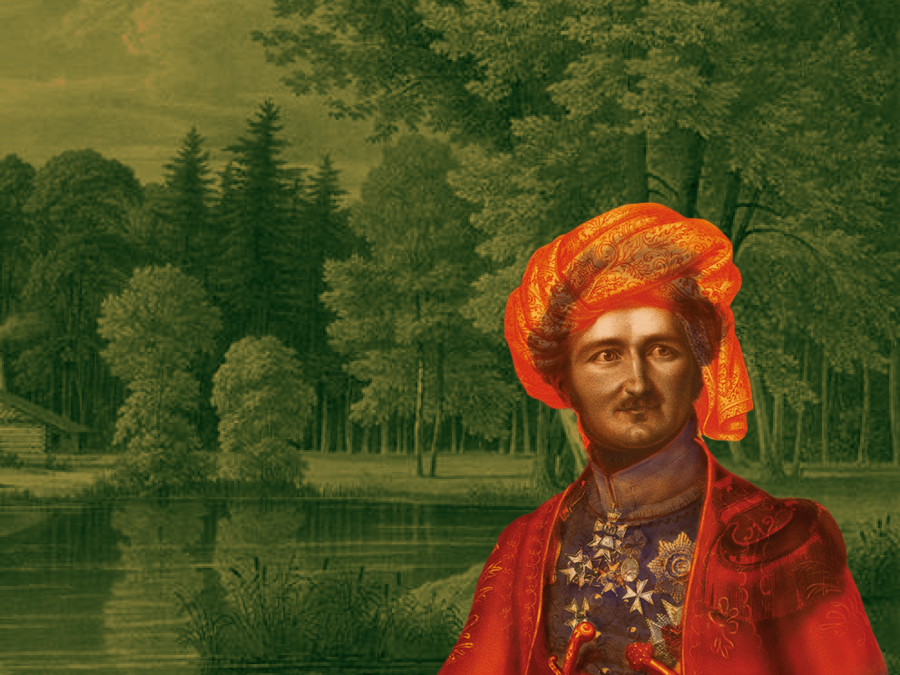
The little town of Muskau
Permanent exhibition in the castle tower of the New Castle
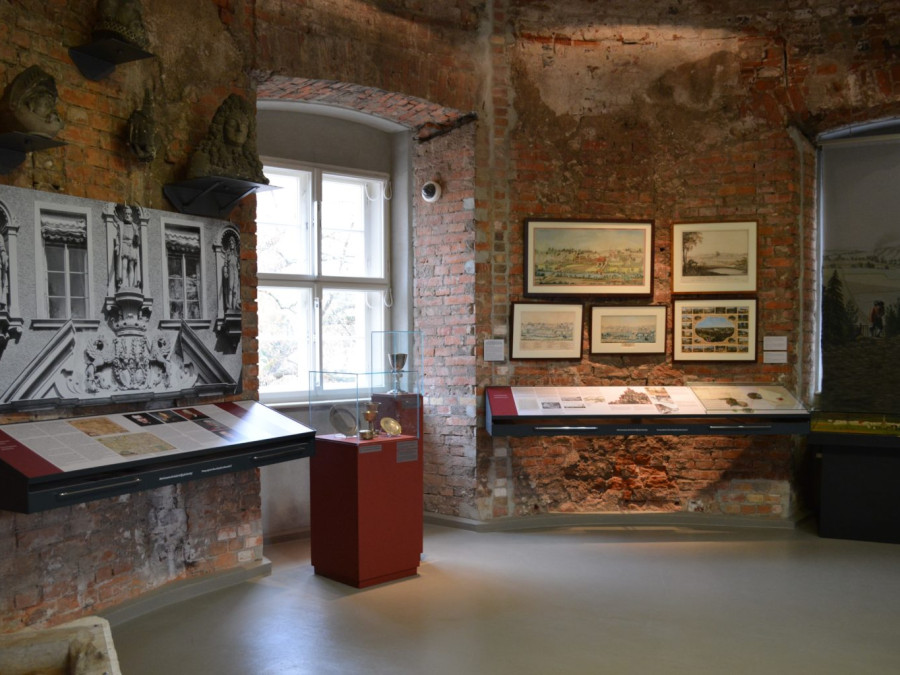
Castle tower
Viewing platform in the south-west tower of the New Castle
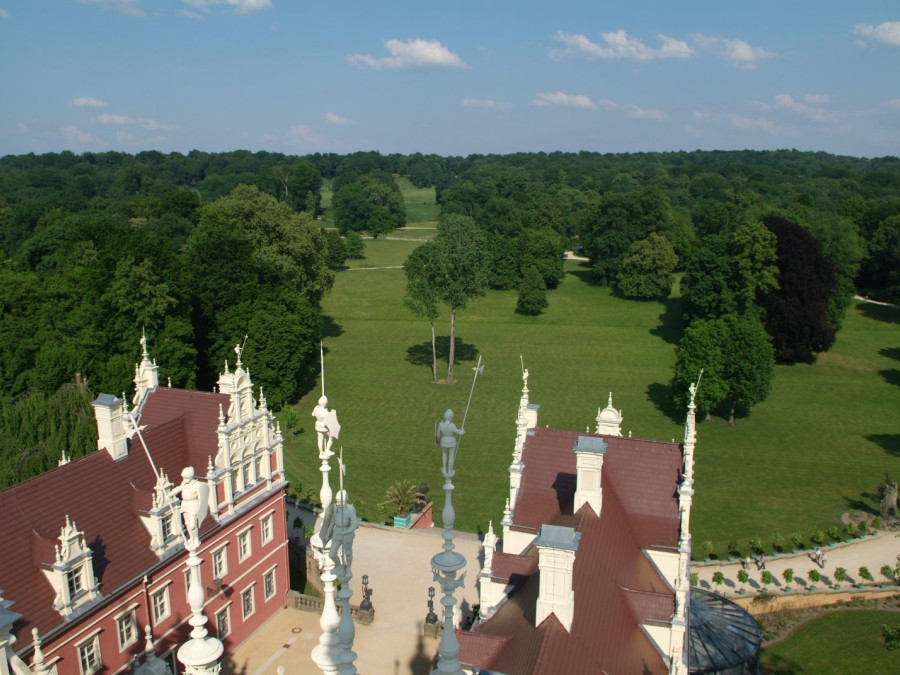
Events
WinterStage in the castle
New Castle
31.01.2026 - 08.02.2026
Winter Festival of Lights
18:00 o3
21.02.2026
Eine inszenierte Lichtwanderung durch den Muskauer Park
Read moreNATURKLÄNGE mit dem MDR Musiksommer
17:00 o3
09.08.2026
News
Arnim-Publikation erschienen!
Erstmaliger, umfassender Überblick über die Ära der Grafen Arnim in Muskau (1883 bis 1945)
Read moreClosure of the English Bridge
Read moreCalendar of the ancient oak trees of Muskau
The most beautiful ancient oak trees in Muskau Park, newly portrayed in atmospheric watercolors, accompany us through the year 2026.
Read more